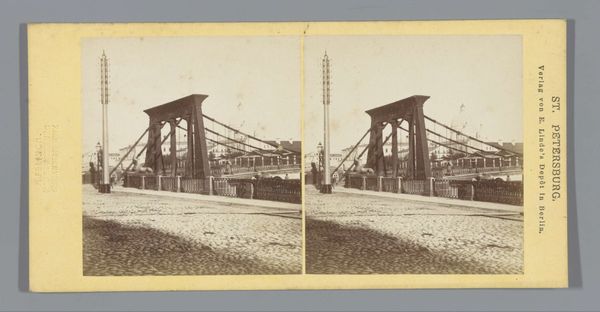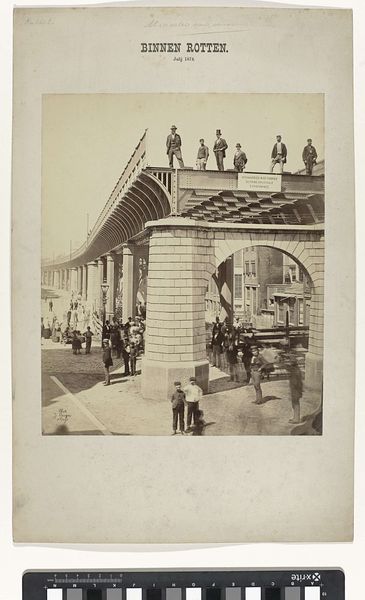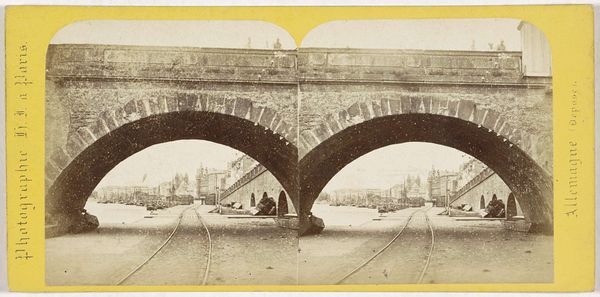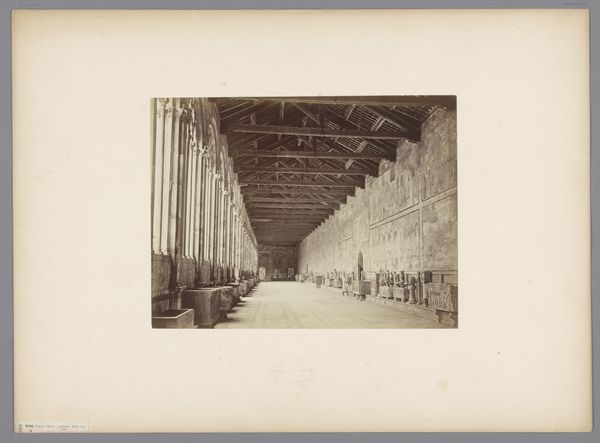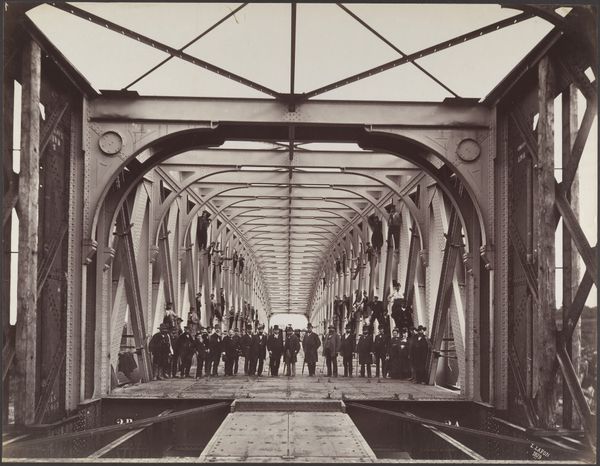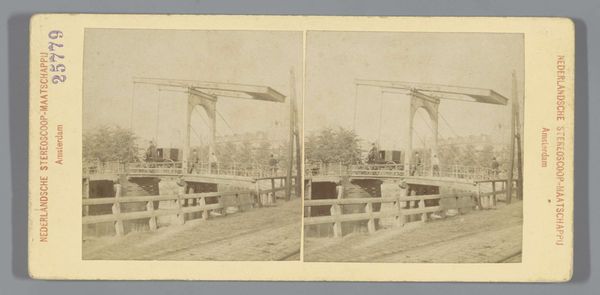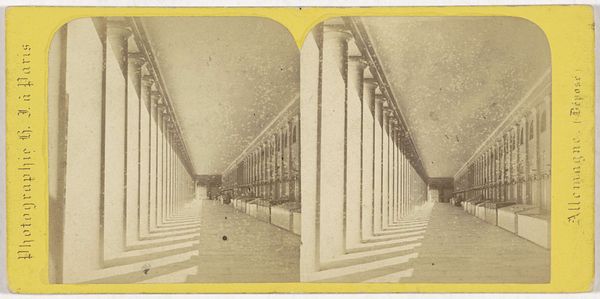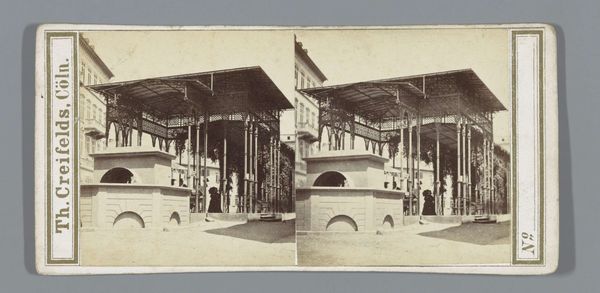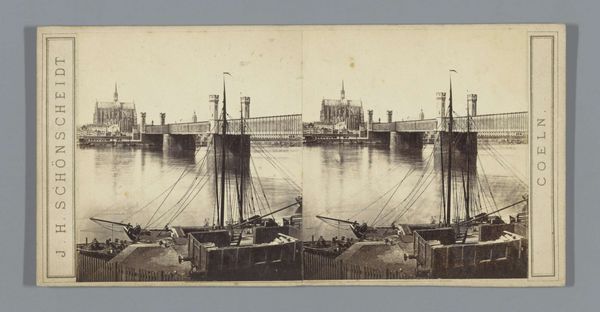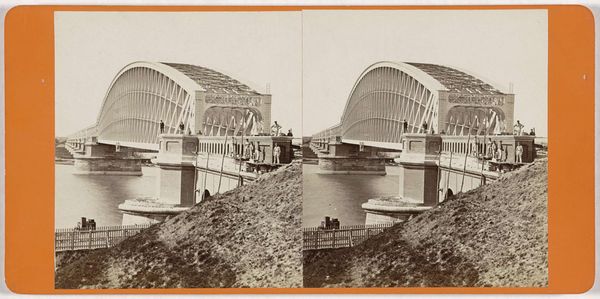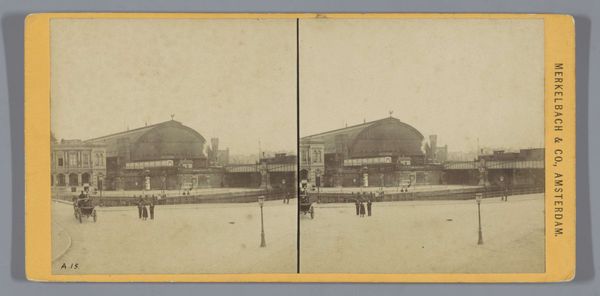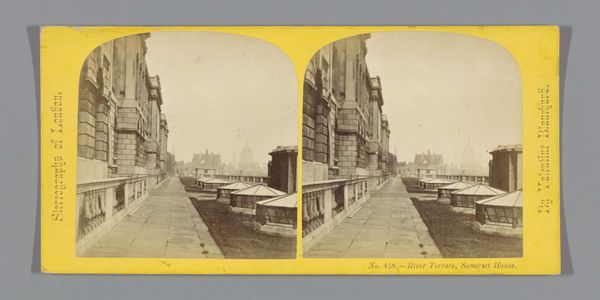
print, photography, gelatin-silver-print
# print
#
landscape
#
photography
#
gelatin-silver-print
Dimensions: height 85 mm, width 170 mm
Copyright: Rijks Museum: Open Domain
Curator: Anselm Schmitz's gelatin silver print, dating back to sometime between 1860 and 1870, captures "Voetgangers op de Dombrücke te Keulen" - Pedestrians on the Cathedral Bridge in Cologne. What strikes you initially about it? Editor: An echoing emptiness. Despite the figures populating it, that long tunnel feel overwhelms. There's a stark contrast between the delicate detail of the architecture and this almost haunting emptiness. Curator: It's fascinating how photography, a relatively new medium then, documents a symbol of industrial progress. This bridge, seemingly built to unite, could also isolate depending on how you perceived the march of technology and urbanization, don’t you think? Editor: Precisely! This image highlights labor, construction, the very means of crossing divides both literally and figuratively. It's steel, labor, design – all congealing in this single architectural feat. And of course we can ask about the working conditions around the Dombrücke itself. These kinds of structures aren't born of thin air. Curator: It gives a glimpse into the collective experience of navigating modernity during this era of rapid change. Each person is merely passing through, swallowed up by the architecture, on display, becoming an indistinguishable component in this great experiment. It seems like anonymity lurks in every corner. Editor: But that architecture! I mean, look at the details, repeated to the vanishing point! The bridge itself has an agency here. Consider the process of crafting the gelatin silver print too – the layers upon layers needed to produce that feeling of depth, and that stark monotone effect. What a contrast in experience and output! Curator: It speaks volumes. Seeing it this way reframes my understanding; no longer a passive recording, but a carefully considered artistic statement regarding human interaction within ever expanding, technologically driven spaces. The bridge, in a way, imprisons as much as liberates. Editor: Definitely! It also forces you to wonder who owned this image originally, who made prints available and what its consumption might signify socially at the time. Curator: Right. It takes this photographic journey beyond just aesthetics. We started with this echo and ended in societal context, amazing! Editor: Indeed. What a fascinating capture and creation to contemplate today.
Comments
No comments
Be the first to comment and join the conversation on the ultimate creative platform.

